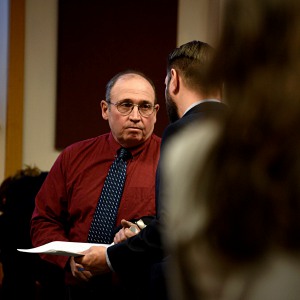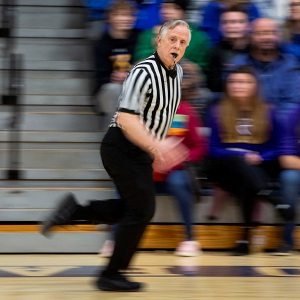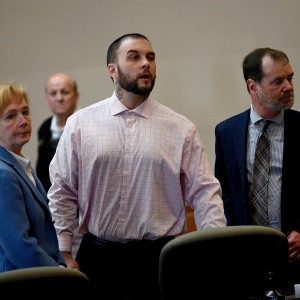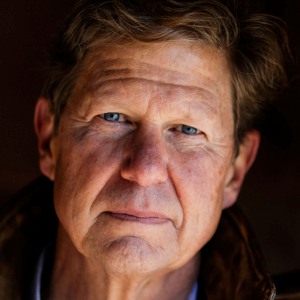Commentary: Vermont must resolve the school choice disconnect
| Published: 03-15-2023 10:24 PM |
Below is a March 12 letter from Jay Badams, superintendent of Hanover and Norwich schools, to Vermont legislators. It is reprinted here with Badams’ permission and has been lightly edited to fit Valley News style.
Dear Vermont legislators,
I am a relatively new Vermont (and New Hampshire) superintendent, so for the past five years, I have done more listening and learning than speaking. I came here in 2017 from a medium-sized urban school district in Erie, Pa., where I was very active in public education policy, advocated for educational equity, and served on the Pennsylvania State Board of Education. I entered service in the Hanover/Norwich Schools just as Act 46 was being implemented, and have had to learn about the school funding mechanisms, laws and policies of both states. After almost six years, I feel that I have a reasonably firm grasp of both systems. I write to you now as both a public school administrator and as a concerned citizen and taxpayer from South Strafford to share my thoughts about H.258. It is also important for me to point out that I am the husband of an educator at The Sharon Academy, which makes this a difficult letter for me to write. The ideas I share here are mine alone. In the wake of the U.S. Supreme Court’s Carson v. Makin decision, you are faced with both a daunting challenge and a rare opportunity.
I recently read Alex Hanson’s Feb. 19 article titled “Tuition changes a threat to some” and found it to be a thought-provoking catalyst for what should be an important debate about public education rather than a premature requiem for independent schools. In a state that faces a population decline, public school enrollment will follow suit. The Vermont Legislature’s Joint Fiscal Office issued a report on state population trends in January of this year. They observed that from 2010 to 2021, our state’s 0- to 17-year-old population decreased by 12,000, or 9%. Hanson’s description of the closure and consolidation of high schools in the White River Valley Supervisory Union is an obvious example of the impact of this trend. Superintendent Jamie Kinnarney’s observation that even with that consolidation, the SU’s remaining high school is under-enrolled further emphasizes the point. Along with downward pressure on enrollment, these demographic trends contribute to significant staffing challenges in our schools. Scarcity fuels competition for resources, which I believe is why the most important philosophical and political aspects of this debate are overshadowed by the zero-sum economics involved.
The Sharon Academy’s head of school, Mary Newman, warned that since 80% of TSA’s students are publicly funded, the provisions of S.66 and H.258 “would likely mean closing the school.” The school’s website states that 85% of the students are publicly funded. I would argue that an “independent school” that is 80-85% publicly funded is not an independent, but rather a dependent school. Without public funding, the school would be unsustainable, at least under current conditions. In most other states, a school with a funding profile like TSA would likely be a public charter school, but Vermont is one of five states with no charter school law. Hanson wrote that TSA’s administration “has brought the school closer to public school status than it has been before.” How much closer? Do TSA’s (and other independent schools’) educators and administrators need to be licensed and maintain licensure through ongoing continuing education? No. Are independent schools’ state assessment results, along with a wide array of other accountability factors, required to be posted annually in an online “report card?” No. Do the citizens, who pay the bill for 85% of those students, get to vote on the TSA budget at Town Meeting? No. Are independent school employees protected by collective bargaining agreements and labor unions? No.
Public schools are highly regulated by state government and directly accountable to locally elected school boards. Independent schools that receive our public tax dollars are minimally regulated by the Agency of Education, and their unelected boards of directors have no significant obligation to the public in exchange for that 85% of their revenue. This amounts to abdication of local control.
Article continues after...
Yesterday's Most Read Articles
 Crowd turns out to honor late Ascutney Fire Chief Darrin Spaulding
Crowd turns out to honor late Ascutney Fire Chief Darrin Spaulding
 Former principal of South Royalton School released from prison
Former principal of South Royalton School released from prison
 Pick a sport and Pete DePalo’s has probably officiated it over the past 40-plus years
Pick a sport and Pete DePalo’s has probably officiated it over the past 40-plus years
 Upper Valley residents among advocates for NH aid-in-dying bill
Upper Valley residents among advocates for NH aid-in-dying bill
 NH man convicted of killing daughter, 5, ordered to be at sentencing after skipping trial
NH man convicted of killing daughter, 5, ordered to be at sentencing after skipping trial
Which brings me to what I believe is the true debate. Given the well-documented needs of our public education system, should we be funding ways to opt out? “School Choice” has been a conservative rallying cry for decades. Milton Friedman himself popularized the idea that “the money should follow the child,” whether to the local public school, private school or religious school. People who share his belief in the power of the free market to derive educational excellence from competition have spawned all sorts of voucher programs, charter schools, “opportunity scholarships” and home-schooling co-ops, all of which involve some degree of freedom from local, state and federal governance and oversight. These efforts have also provided opportunities for discrimination, segregation and abuse of public funds.
TSA Head of School Newman stated it clearly when she said that she “would rather see all students in Vermont have choice than see it restricted.” Just try for a minute to imagine the management of such a system — if it ever came to pass, I’d get a law degree just to make my fortune on discrimination cases. Coincidentally, Newman’s wish is exactly what Florida Gov. Ron DeSantis and the state’s Republican Legislature are trying to do right now with HB 1, the Universal School Choice bill. Conservatives propose these measures as a way to break the “public education monopoly,” “combat the leftist teachers unions” and provide alternatives to “the government schools.” These efforts are well underway in New Hampshire, where choice and voucher policies have already been enacted that threaten to undermine public schools. Vermont’s practice of allowing public funds to be used for private school tuition should be the envy of all of the states that have made school choice their top legislative priority for 2023, including Arkansas, Texas, Florida and Wyoming, to name a few. In fact, if you do a little internet research, you’ll find our current tuitioning system lauded by organizations like the libertarian Foundation for Economic Education. Again, I’m not advocating a partisan position on this matter, simply pointing out that our long-standing practice is clearly situated as a policy priority of the political right.
Maybe the conservative argument has merit. Maybe choice is the solution to problems we face in public education. Maybe the best way to improve our schools is to continue to allow people to vote with their feet, and allow our towns to pay tuition to independent and religious schools. In any event, the U.S. Supreme Court’s decision in the Carson v. Makin case is calling the question. The court was clear in restating its declaration from the earlier Espinoza v. Montana case that “A State need not subsidize private education, but once a State decides to do so, it cannot disqualify some private schools solely because they are religious.” You must decide how you will respond to this decision given your position between the rock of the Compelled Support clause in the Vermont Constitution and the hard place created by the court’s ruling. Half steps, or obvious attempts to preserve the status quo, will only serve as speed bumps in the race to litigate.
So, S.66 and H.258 have rekindled a debate about the use of public funds to pay for private school tuition. Personally, as an ardent supporter of public schools and also as a believer in people’s right to attend independent schools at their own expense, I see a few different ways forward. The first would be to let these bills fizzle at the first wave of testimony from tearful students who don’t want their schools to close, or from legislators with ties to one independent school or another, and to let these proposals die as they have before.
Another would be to pass these bills, stick to principle and allow independent schools to be self-sustaining, or truly independent, and let the free market choose the winners and losers, as we’ve seen with many of our small private colleges. I find it ironic that in the wake of Act 46 we continue to publicly fund a parallel school system with negligible regulation, minimal oversight and with complete independence from duly elected school boards. We passed Act 46 in the name of efficiency and sustainability largely to deal with the issue of declining enrollment, yet allow independent school choice even when nearby public schools have plenty of room.
For those (in?)dependent schools that fill a community need because of a lack of public school capacity or proximity, and that currently rely on public funding, a third option would be to make them public schools. Allow them to continue operating, but hold them to the same standards we insist on from our public schools. It would seem an easy bit of legislation to create a chartering process to allow certain existing private schools to apply for a public charter, continue to receive public funds, but then comply with state regulations and operate transparently. I’m tired of hearing independent schools decry the irrelevance of test data and recite the canard of “state-mandated curriculum.” I get angry when the National Association of Independent Schools implies that only they care about “the whole child.” How well do students at TSA and other independent schools learn math? How well do they read? Do they know anything about science? What are their post-graduation outcomes? As a parent, I’d like to know how well they’re doing compared with their neighbors who choose to go to White River Valley, or Thetford, or Hanover. They may be doing great. Maybe TSA and other independent school parents and students know the answers to these questions, but those of us footing the bill don’t. As a taxpayer, I’d like to know if my ever-increasing property taxes are being well-spent.
With all due sarcasm, if we decide to continue funding these schools through public taxation with minimal regulation, I propose that we provide the same latitude to our public schools. Get rid of teacher licensure. Get rid of mandatory professional development. Dissolve the unions. Let the public schools hire whomever they want, teach whatever and however they want, and keep their test scores secret. Forget all of those cumbersome data reporting obligations. Let the children of Vermont choose any school they wish and decommission the Agency of Education, since it would no longer be needed.
I urge you to craft legislation that will serve our children and our towns well, support our public schools, and avoid costly litigation, the outcome of which will no doubt follow the trend the current U.S. Supreme Court has so far demonstrated.
Jay Badams is superintendent of SAU 70 — Hanover and Norwich schools

 Editorial: Chris Sununu’s moral vacuum
Editorial: Chris Sununu’s moral vacuum A Yankee Notebook: An inevitable and terminal move
A Yankee Notebook: An inevitable and terminal move Editorial: Gambling tarnishes America’s sporting life
Editorial: Gambling tarnishes America’s sporting life By the Way: A white nationalist’s many mistruths
By the Way: A white nationalist’s many mistruths
